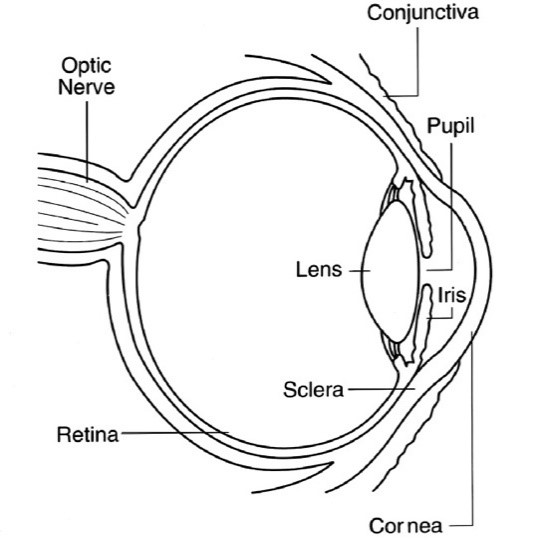RLE: Refractive Lens Exchange and cataract surgery
The first word that pops into people’s heads when they decide that they are tired of wearing glasses is usually ‘Laser’. As a result, you then start wondering ‘am I a suitable candidate for refractive surgery?’ However, in those over the age of 40, laser eye surgery is not actually the best solution. “Refractive lens exchange”, or RLE, is the surgeon’s option of choice in those who wish to be free of spectacles and are nearing or beyond that frustrating magic age where you need glasses to see details up close.
What’s the difference?
RLE is essentially the same procedure as cataract surgery, but the main aim is not to treat a cataract, but rather to allow a person to be able to see clearly with minimal, or no aid from spectacles. But it does come with the added bonus of removing any cataract change that may be present as well!
Inside our eye sits a lens; similar to a lens in a pair of glasses but much smaller. When we are born, the lens is clear, but as we age it begins to become cloudy. Subsequently, this gradual clouding of the lens causes vision impairment and is known as a cataract.
During cataract surgery, the natural, cloudy lens inside the eye is removed and replaced with a clear, plastic lens. When we replace the lens during cataract surgery, we can select the power of the artificial – or ‘intraocular’ – lens (IOL) we insert.
- Anatomy of the eye, showing the position of the natural lens
- An intraocular lens
Technology over the past 10 years has advanced to the point where we can now tailor the power of the IOL. This means we can quite accurately correct short-sightedness, long-sightedness or astigmatism following surgery. As a result, in many cases, patients no longer require glasses as often as they used to, in fact sometimes not at all! This has led to many patients undergoing cataract surgery before their cataracts have developed to the point of interfering with their vision, in order to reduce their dependence on spectacles.
Will I need glasses after RLE surgery?
It is important to understand the three types of vision to understand the possible outcomes in vision following RLE.
- Distance vision: for long-distance tasks, such as driving and watching television
- Intermediate vision: for tasks such as computer work, seeing the dashboard of your car, seeing your smartphone or looking at groceries on a shelf at a supermarket
- Near vision: for close distances, such as reading, sewing and doing fine activities
Your options for surgery
There are four main options when it comes to refractive surgery, each with its own advantages and disadvantages. While the results of RLE are excellent in most cases – there is no perfect solution. In the majority of cases, there will be some form of compromise in either loss of vision quality, depth perception, or dependence on glasses.
-
BILATERAL DISTANCE VISION
Outcome: both eyes are corrected for long-distance
Pros: Excellent quality distance vision
Cons: Glasses will be needed for reading
-
MONOVISION
Outcome: one eye is focused in the distance, and the other eye is focused for near vision
Pros: Provides good quality vision across a variety of distances
Cons: Glasses will usually be needed for night driving and seeing fine detail at near distance. A mild loss of depth perception. So it may take time to fully adapt
-
EXTENDED DEPTH OF FOCUS
Outcome: both eyes are focused in the distance, but will have reasonable mid-range vision
Pros: Provides good quality vision across a variety of distances, e.g. driving, computer work, seeing the car dashboard or smartphone. No impairment of depth perception
Cons: Glasses will still be needed for fine print or extended periods of reading or computer work. More expensive than options 1 & 2
-
MULTIFOCALS
Outcome: Combined distance and near vision focus in each eye.
Pros: Greatest freedom from glasses compared to options 1, 2 and 3 – able to see fine detail in the distance and near without using glasses
Cons: Reduction in overall quality of vision, often described as ‘waxy’ vision, glare and haloes (especially at night) and may be difficult to adapt
Astigmatism and toric lenses
You may also have astigmatism. This is where the eye is not perfectly round but is slightly ‘football-shaped’. In people who have astigmatism, the light does not focus evenly on the back of the eye, causing additional blurring of vision. If you have enough astigmatism, your surgeon will recommend an extra-special IOL called a ‘Toric IOL’ that corrects for astigmatism, giving you the best outome following refractive surgery. Fortunately, all of the four options for surgery are available in toric intraocular lenses.
But which option is best for me?
Everyone is different and the most suitable IOL for you will depend on your lifestyle and needs. At KindSIGHT, we understand that the choices available to you may seem overwhelming at first. We pride ourselves on communicating with and supporting you, so together we can select the optimal solution to suit your lifestyle.
If you have been mulling over the possibility of refractive lens surgery, feel free to schedule a consultation with our team so we can discuss the best options for you!




